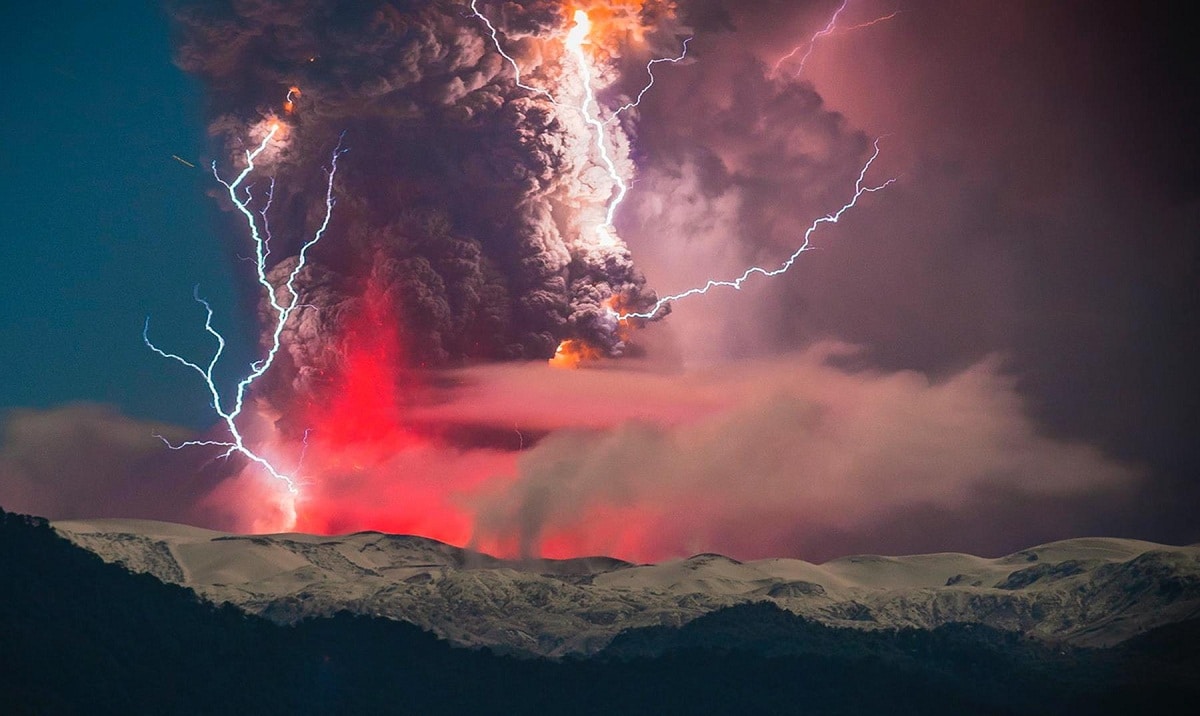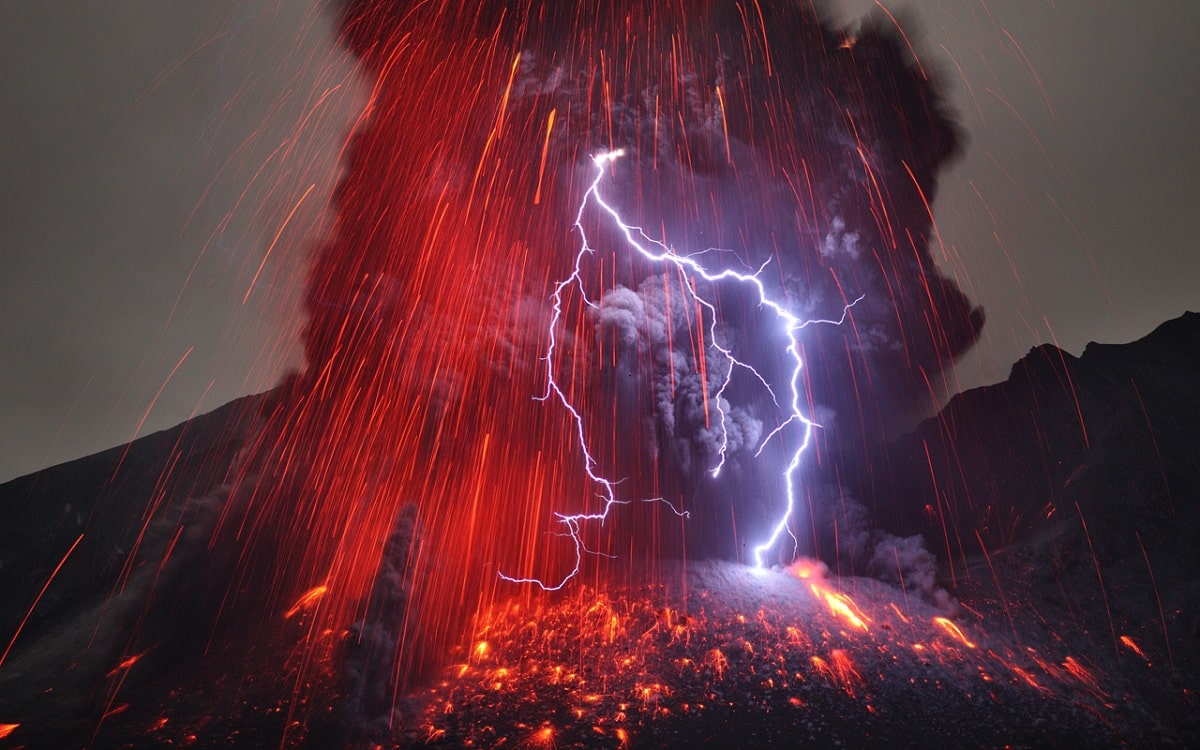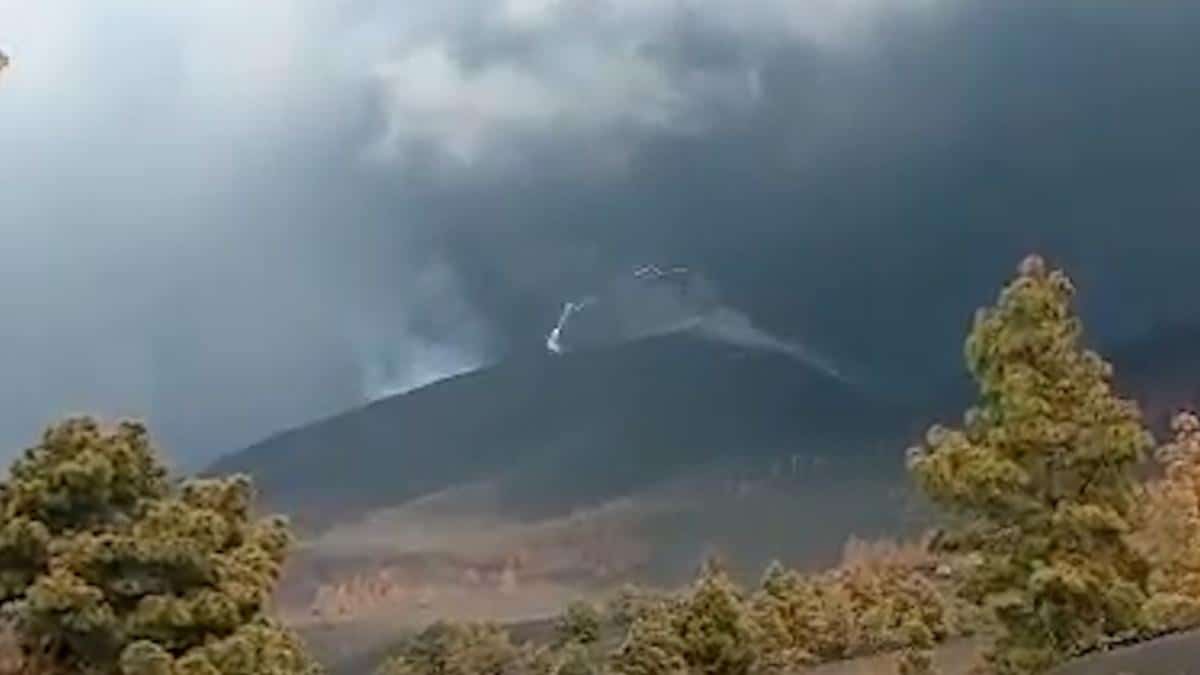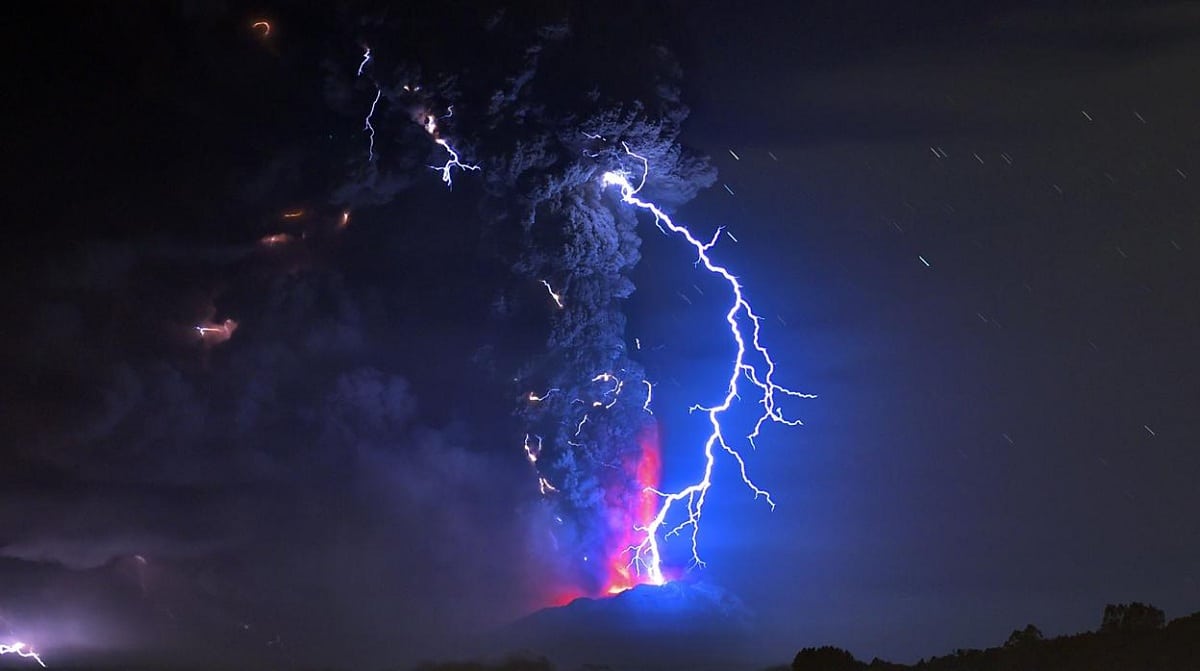
El volcanic lightning It is one of the most intriguing phenomena on the part of the human being. And it is that it takes place during a volcanic eruption and special conditions are needed for its appearance. When they appear, the volcanic lightning of this an impressive spectacle worthy of photographing.
For this reason, we are going to dedicate this article to telling you how volcanic lightning is formed, what its characteristics and origin are.
volcanic lightning

Volcanic lightning is an electrical discharge caused by a volcanic eruption. The ash and pyroclastics ejected by the volcano are neutral, that is, They have no electrical charge, so they cannot generate lightning on their own. However, the friction between volcanic materials in hostile environments can lead to the release of ions in the volcanic column, producing these impressive phenomena. The separation of positive and negative charges creates a large potential difference, which causes discharge.
But are they present in all types of volcanoes? The answer is no. To produce volcanic lightning, the erupting volcano must have the same explosive properties and plume size as La Palma. And it is that, although at first the Canary Volcano presented a Strombolian-style eruption that, among other things, was not very violent, the peaks of activity recorded at certain times allowed these rays to form.
Research

A study in the journal Science suggests that a volcano's electrical charge originates when rock fragments, ash and ice particles collide in a column of volcanic columns. Back then, static charges were created the same way lightning is created in normal thunderstorms, except in these cases it was only created when ice particles collided. Likewise, Volcanic eruptions also release large amounts of water, which helps fuel the creation of these thunderstorms.
The first recorded observations were made in AD 79, when the Roman historian Pliny the Younger described the eruption of Mount Vesuvius. This event is reflected in the shocking words and images of that historical moment: the entire crowd saw a cloud pierced by firelight, hiding the rays of the Pompeian sun under its mantle. On the same volcano, Professor Luigi Palmieri conducted the first scientific studies on volcanic lightning or dirty storms during the eruptions of 1858, 1861, 1868 and 1872.
Currently, a survey published in 2008 in the Bulletin of Volcanology shows that 27% to 35% of volcanic eruptions are accompanied by these flashes (Ray). Spectacular dirty storms have been photographed all over the world, including Mount Chaitén in Chile, Colima in Mexico, Mount Augustine in Alaska, as well as Mount Eyjafjallajökull in Iceland and Mount Etna in Sicily in Europe.
How does volcanic lightning form?

The friction between hail particles and water droplets located at the top of a cumulonimbus cloud (thundercloud) causes the air to ionize and accumulate a significant potential difference between some parts of the cloud and others. This eventually produces lightning within clouds, but also lightning that reaches other clouds or discharges to the ground.
In the case of volcanic lightning, the conditions in the ash cloud should be similar to those inside the thundercloud.
The ash and pyroclasts expelled by volcanoes are initially neutral (no electrical charge), but the friction between them in a definitely harsh environment (burning) can cause the release of ions in the volcanic plume.
Volcanic lightning occurs only when this happens, that is, when there is a charge difference in the volcanic cloud.
Consequences and curiosities
An important consequence of these electrical storms is that they affect communications: lightning can disrupt and negatively impact aviation.
Additionally, radio communications in the air and at nearby airports are affected. A study by Stephen R. McNutt and Earle R. Williams of the Alaska Institute of Geophysics and the Massachusetts Institute of Technology, respectively, confirms that "Lightning and electrification in volcanoes are important because they themselves represent a hazard, they are volcanic components of the global environment." circuit, as they contribute to particle aggregation and changes in the ash column.
Erupting volcanoes can cause great phenomena. A study published in Scientific Reports by Andrew Pata, a postdoctoral researcher at the National Supercomputing Center in Barcelona, describes how the evaporation of seawater from Indonesia's Anak Krakatau volcano triggered a volcanic storm that lasted six days and caused a volcanic storm between the 22nd and 2nd of more than 100.000 rays. Therefore, some volcanic eruptions also allow us to observe the formation and evolution of large-scale electrical discharges in the atmosphere.
Why did the La Palma volcano generate lightning?
After the hypnotic effect of clouds distributed concentrically on the sky of the island observed at the beginning of October, when the volcano had been active for more than ten days, lightning had been captured in the main cone of the volcano, as if it were an electrical storm.
Meteorologist José Miguel Viñas explained that these discharges are "an indicator of the explosiveness of the eruption." But why do they occur during volcanic activity? From the Institute of Volcanology of the Canary Islands (Involcan), they shared an image of the volcanic ray, which visually stood out from the gray tones that prevailed in El Paso, the region where the magma originated on September 19 of last year.
It is an electrical discharge caused by the ashes and pyroclasts thrown by volcanoes to the earth's surface, although initially neutral materials, that is, they do not have an electrical charge by themselves, but cause "the release of ions in the volcanic plume » due to its presence in friction in environments hostile.
As you can see, this phenomenon has become quite important since the eruption of the La Palma volcano. I hope that with this information you can learn more about what a volcanic ray is and how it originates.
Every day I am aware of such interesting knowledge that they bring us to know the wonders that Mother Nature and the Universe offer us. Greetings